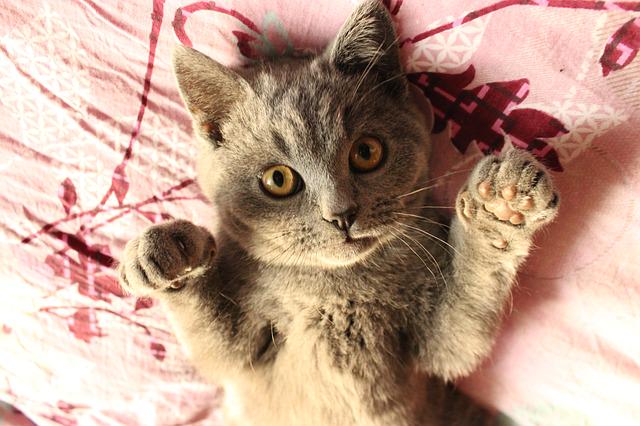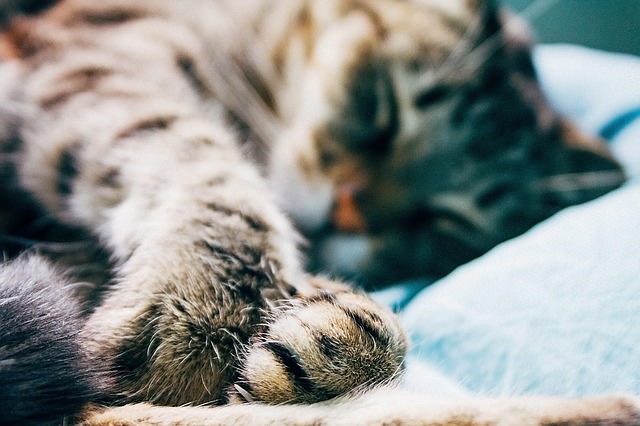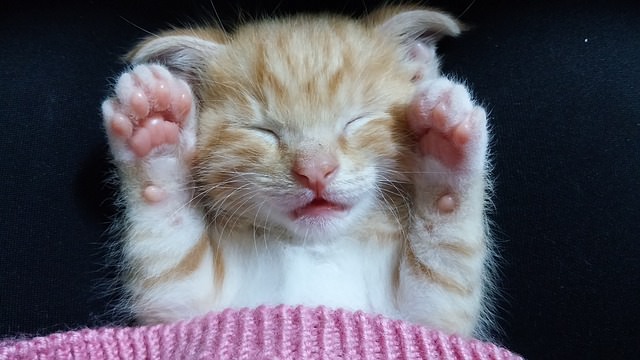Since you love your cat, you love every part of her, and it’s important that you understand every part of her, t00. Her paws are the foundation that she stands on and there are some valuable things that you should know about them. They play a huge part in helping a cat do his job as a hunter, as well as helping him stay safe and communicate with other cats.
1. Each of the paw’s joints are subject to joint disease.
A cat’s paw is made up of bony structures and soft tissue, just like our hands. Both front and rear paws have tiny bones, ligaments and tendons on the inside and are covered by skin and hair. A cat’s paw pads are analogues to the padded parts of our hands, but are even more equipped for their purpose of facilitating speed and agility for a cat. Each section of a cat’s toe that he can flex is a joint and is subject to joint diseases, like osteoarthritis. A cat can flex and grip all his toes powerfully, which enables him to climb. The last digit of a cat’s toe is the one that houses the claw.
2. Declawing is an amputation.
The claw makes up more of a cat’s toes than our nails make up our fingers and declawing a cat literally mutilates his foot forever. When you rip off one of your nails, it will eventually re-grow. A partially completed declaw procedure allows the disfigured nail to try to re-grow and become a source of chronic pain. You should know that an incomplete declaw is even worse than a correctly done declaw, but even the best procedures are a mutilation and multiple digit amputation.
3. Paws perceive information about the environment.
As a hunter, a cat must be able to move quickly. His paws are the interface between his body and what he is standing on. The pads of his feet are designed to cushion his impact when he steps and also to help him spring into his next step. A cat has to be agile and quick. The paws are important in her movement. They help her to balance and coordinate. There are many nerve endings in the feet that help her perceive features of her environment. She is able to sense vibration with her paw pads.
4. Beware of paw injuries.
There are many blood vessels in the foot pads that go along with all of the nerves, so if your cat cuts his paw pad, it will bleed profusely compared to other parts of a cat.
5. Paws help cats communicate.
Has anyone ever told you that you “talk with your hands”? Well, your cat takes this tendency to a whole new level. She communicates with her paws. Cats have glands between their toes that secrete a marking chemical called interdigital semiochemical. The chemical releases when she scratches or kneads her paws and it leaves a sign that other cats can read.
It is important to realize that your cat’s paws are vital and similar to your own hands in many ways, but different in many ways too. Make sure that you recognize how adapted your cat is to climb and hunt and make sure that you provide a safe and appropriate way for her be herself! If your cat cuts her paw pads or seems to be in pain when she steps or climbs, ask your vet for help figuring out why.
Do you like learning about cats? I love sharing about them! Find me on Facebook by clicking here.



